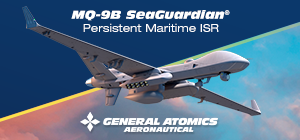
The Royal Navy issued a Request For Information as it looks to establish a commercial framework that is intended to be accessible to all Services and units within Defence. The aim is to coalesce a number of industry partners and users together to accelerate the development, procurement and operational use of versatile mission modules.
The Royal Navy launched the Navy PODS (Persistent Operational Deployable Systems) project in 2020 as part of a wider drive for a more adaptable, globally deployed navy. Since 2020, multiple PODS have been procured, delivering capabilities in “Command and Control, Above Secret workspaces, Logistics, Experimentation, Medical and UXS (Unmanned Systems) operations and maintenance”, according to the Navy.
As of January 2024 the Navy said there were 18 different PODS types, although few details are available in public. The original PODS announced in 2020, numbered Q001 to Q005, had been described as:
01 – A Command and control setup supporting the Naval Strike Network and Enhanced Virtual Environment, aka the new Navy-wide command and contro network and the new tactical communications system for the Royal Marines.
02 – A deployable “mission planning” space with large displays and 3D visualisations
03 – a “strike” PODS for operations with armed drones / Loitering munitions
04 – A UAV support drone with storage racks and ground control station
05 – 3D printing deployable “factory” including CAD design station
At the end of 2022 the Navy launched the procurement of further PODS, including a deployable medical capability composed of two containers. 06 is the Resuscitation and Operating Theatre, while 07 is the Theatre Services module that supplies 06 with power, clean water, grey and black water management, oxygen and gases and storage of medical supplies. This medical capability was later embarked on a BAY class LSD for demonstrations.
09 and 010 are PODS procured specifically for the trials vessel XV PATRICK BLACKETT, offering respectively an elevable sentry position and safe weapons storage and a lifting table with actuating roof enabling deployment of sensors or other payloads for trials.
011 was another drone-support module with space for a crew of 3, and 2 more PODS were specified as deployable field power units of unknown configuration (Q12 and Q13).
In December 2022 an RFI was also released for a “Loitering Munition Storage and Launch Module” for medium sized loitering munition storage and lauch/operations.
In late 2022 G3 Systems announced it had delivered 4 NavyPODS configured to support Royal Navy cargo-carrying drones (Malloy T150, possibly, as at least 22 drones of this type have been acquired by the Royal Marines).
Another PODS, uniquely in a half-TEU size of 10 rather than 20 feet, is being acquired as a cooled storage unit for REMUS underwater drones to be embarked on the Royal Navy HUNT class minesweepers.
At least one PODS has been fitted with an advanced quantum-based navigation system which has been tested aboard both PATRICK BLACKETT and on the RO-RO sealift vessel HURST POINT.
Pods 01 and 05 have recently been handed over to the BattleLab in Dorset to be exploited in development and experimentation alongside the British Army. Q002 has probably served as the base for the development of the “Commando Tactical Ops Centre” for the Royal Marines. It is described as a secure compartment with 3 large monitors for data feeds, blue force tracking, J2 and Operational Staff tools.
Even in absence of more detailed and up to date information about the use and continued development of PODS, we can thus assume the results are encouraging. In the RFI, the Royal Navy asks industry for support solutions for 2 scenarios, of 30 PODS with 10 deployed, or 50 with 20 deployed, signalling an ambition to step up their use in various guises.
Industry feedback is wanted to ensure a common baseline standard for the PODS can be established, maintained and supported, while developing a path for development and integration of various equipment, including government-furnished gear. Responses are due by 11 November.








.png)
